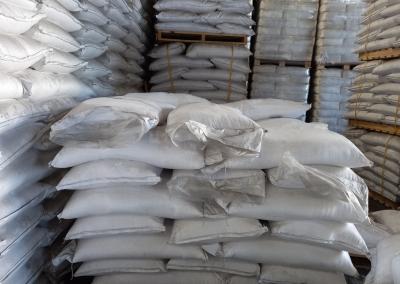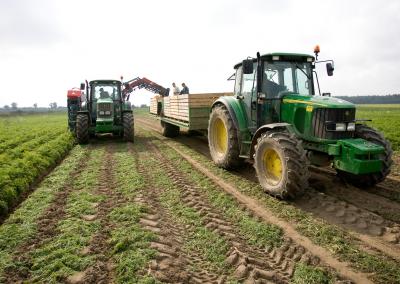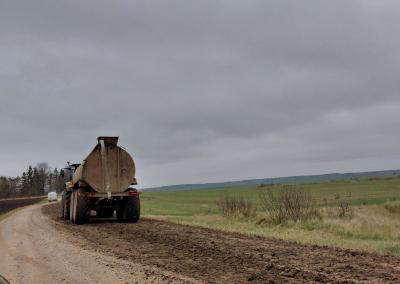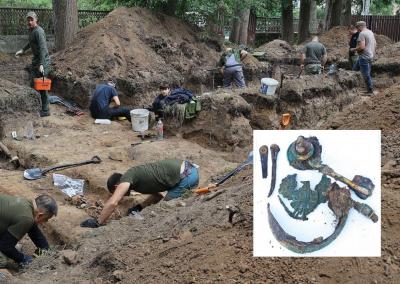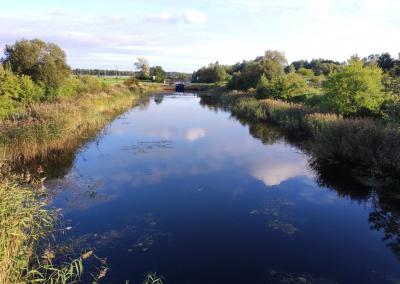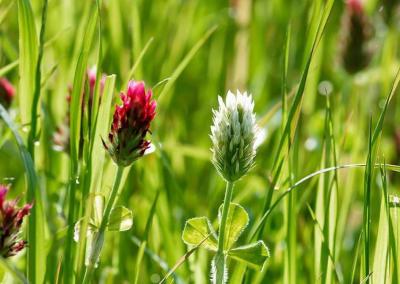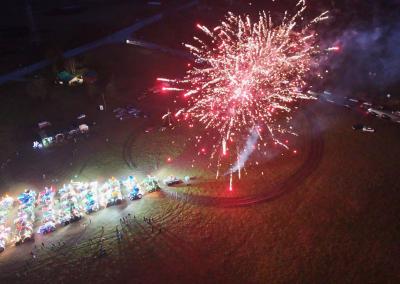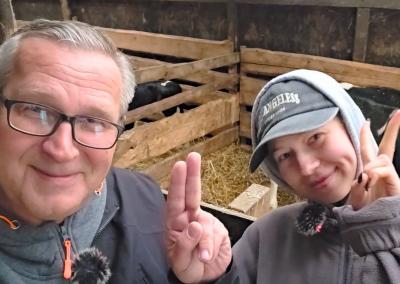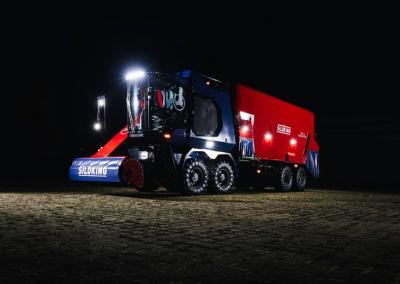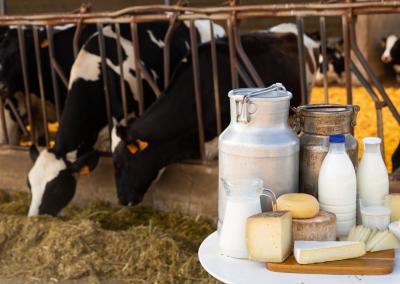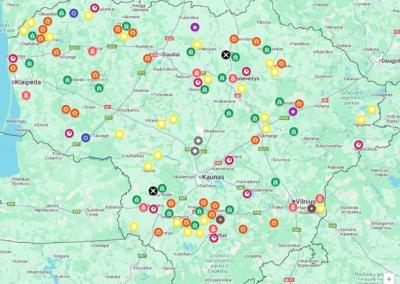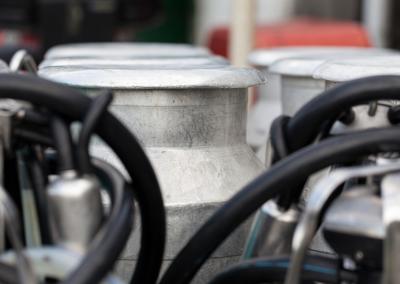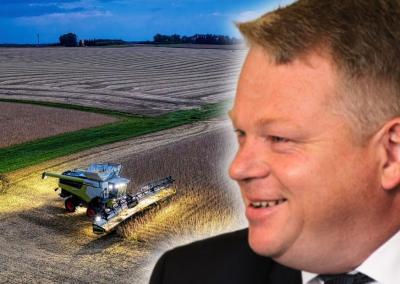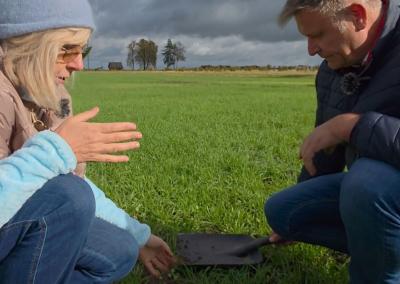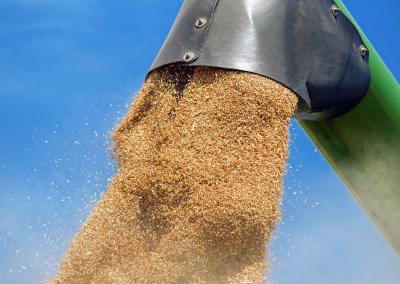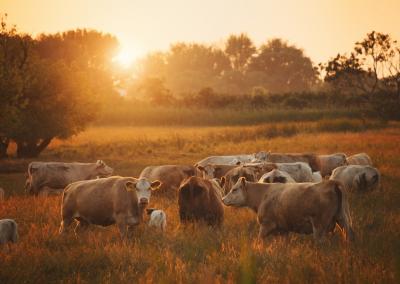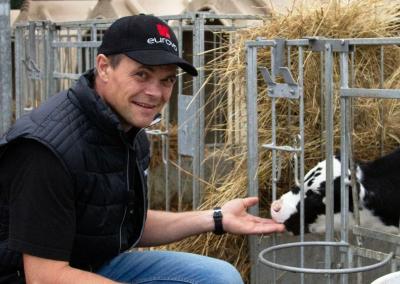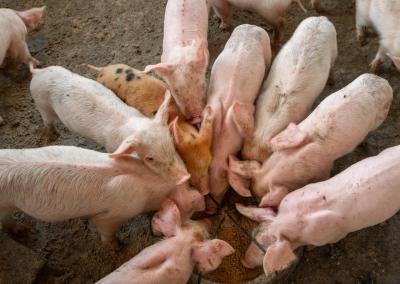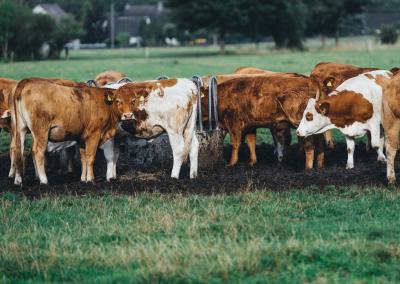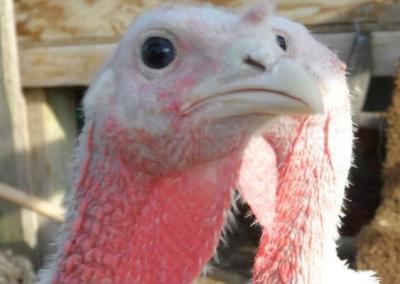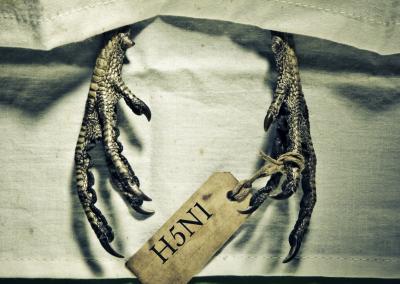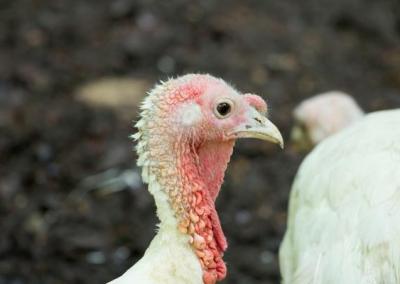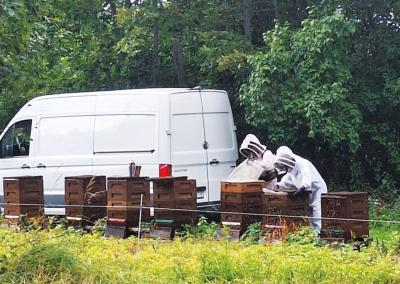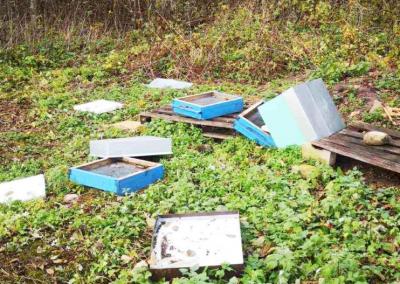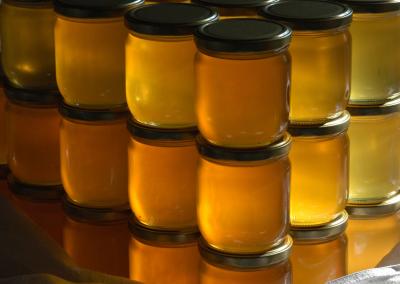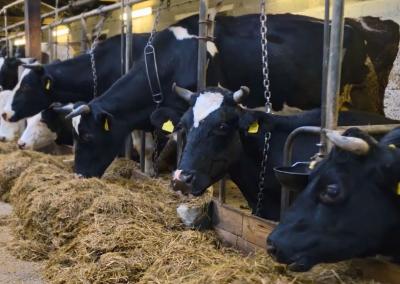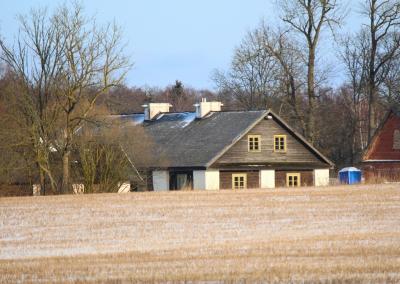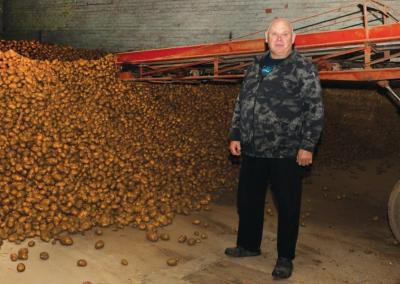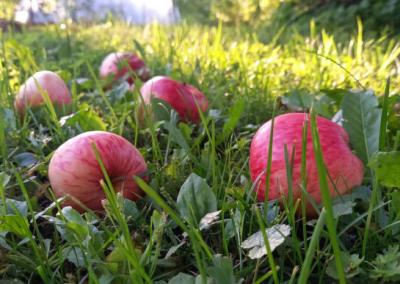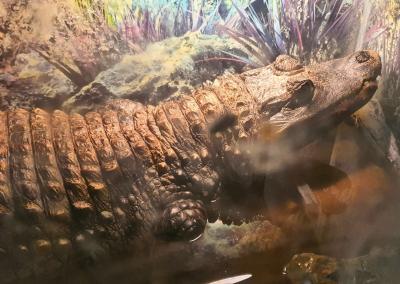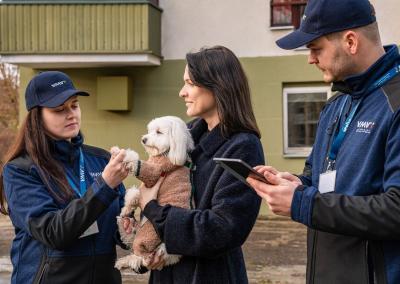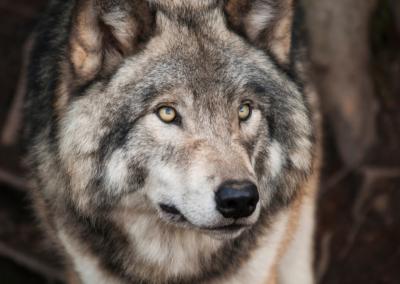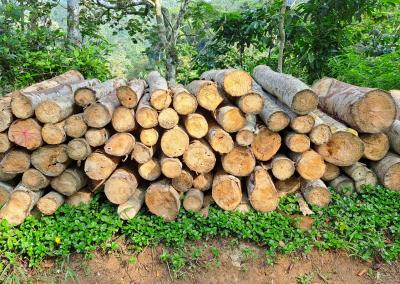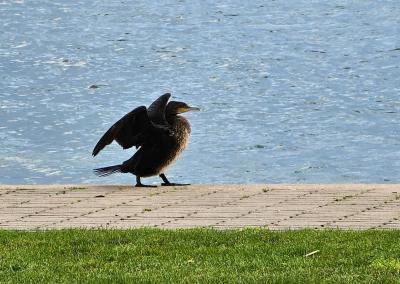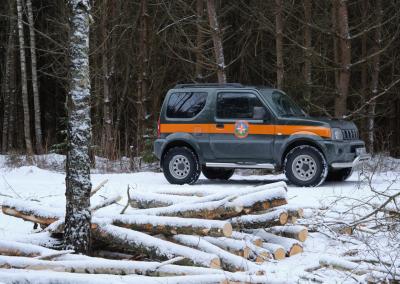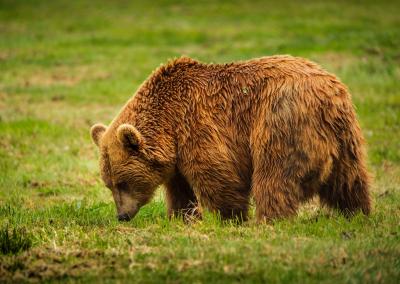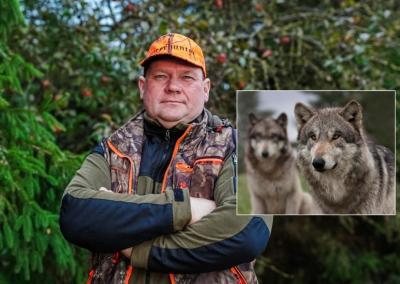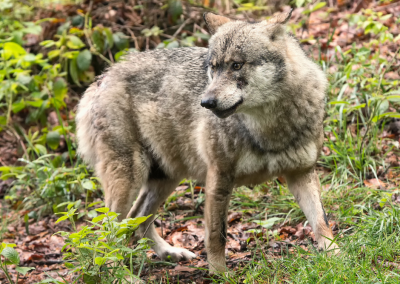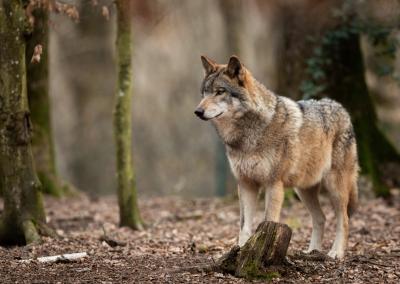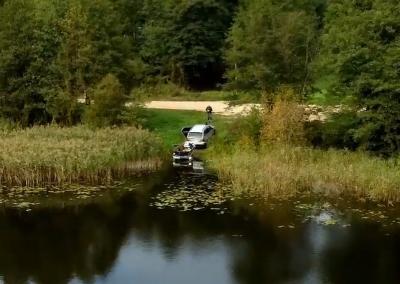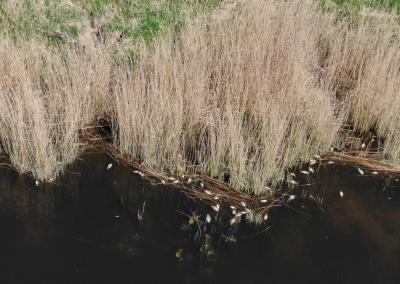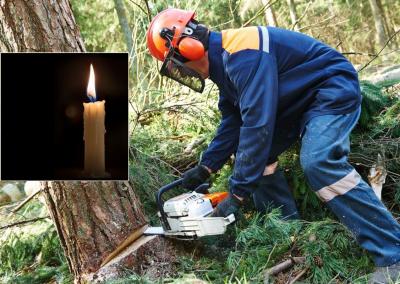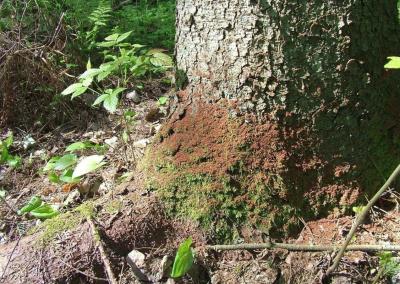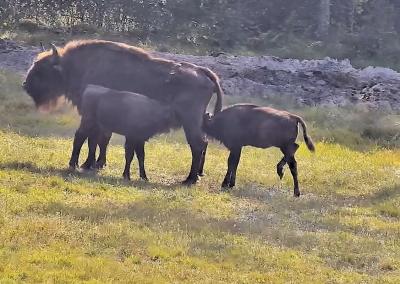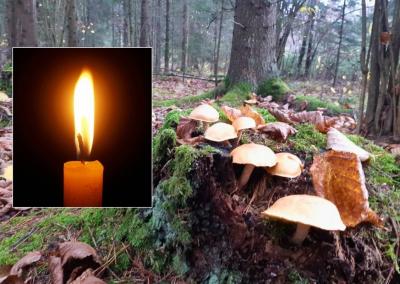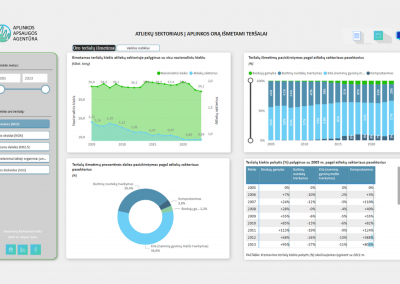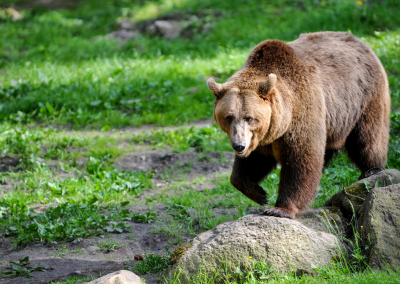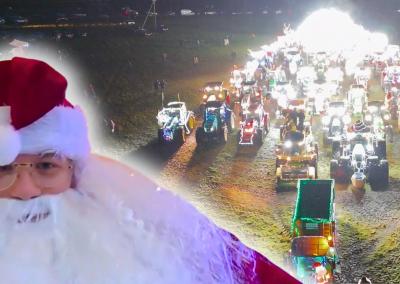Bears in Ignalina area can attack dogs and farm animals
In Ignalina District, as in other eastern regions of Lithuania, bear sightings are becoming more frequent. People have become used to seeing these beasts not only in forests and on roads (near Kazitiškis), but also in the vicinity of homesteads (Pivorai, Čebatoriai). Throughout the month, the space is not silent with stories of bears captured by outdoor video cameras or even phones.
The latest case – a daytime visit of a bear in the vicinity of Ceikiniai (village of Čebatori). The owners managed to film the uninvited visitor pushing the hive. In addition to the well-known threat to beehives and chickens that many people have experienced, there are more and more questions: can a bear attack a dog, a sheep or even a cow? The answer is yes.
Dogs – first targets?
When a cat approaches a farmhouse, a barking dog becomes the first object of attention. If the dog is tethered – unable to escape, it becomes an easy target, if aggressive – the bear may perceive it as a threat and defend itself, curious and approaching – especially in a dangerous situation. There have been cases where bears have killed guard dogs that were protecting bees or pastures.
Sheep, goats – as natural preyThese animals are unable to defend themselves and their enclosures are often simple. Bears detect livestock by smell, and if they find a weak fence – they destroy it very quickly. It is especially dangerous at night when people are not around. In Estonia and Latvia, bears have been officially recorded as mowing down livestock and publicly acknowledged – this is no longer a rarity.
Cows and calves – rarer but potential targetsA mature cow – a large and powerful animal. Bears tend to avoid them. But calves, weak cows or single cows left without people close by – are at risk.
In some countries (Scandinavia, USA) there are known cases of bears attacking cattle, especially if previous attempts have been successful.
How to protect livestock from bears?
- Keep livestock in the barn overnight, especially sheep, calves, goats.
- Use an electric shepherd – especially around hives or sensitive pastures.
- Surveil the area – video cameras or motion sensors help you understand what is happening at night.
- Don't tether your dog close to the woods or alone – it's better to keep it close to the owner or yard.
- Don't collect items with smells – leftover food, waste can attract bears.
Bears do not behave in bad faith
However, it is important to understand that bears attack when they see an easy access to food or when they feel threatened. Once it has got its prey, it is very likely to come back. Prevention and community vigilance is therefore the most important defence.
If you observe damage caused by a bear – be sure to contact the Department of Environmental Protection. Their experts should assess the situation and, if necessary, apply protection or repellent measures.
Wolf and/or bear
Farmers in the Ignalina region who keep livestock often wonder how to protect themselves from wolves, whose damage in recent years has been desperate. Some have found a good way to do this by stretching fences or parts of fences (poles) with a special lubricant made from bear excrement (urine). This naturally raises the question – will wolves retreat from Ignalina if bears have taken up residence in the area?
Both wolves and bears are predators, but their lifestyles differ. Wolves hunt in packs, while bears hunt alone, usually choosing easy prey: cubs, scraps, honey or even livestock. But one thing they have in common – both species avoid direct conflict.
In some countries, such as Jeloustoun in the USA and Finland, it has been observed that when a bear appears, wolves retreat – they do not attack their prey, nor do they look for confrontation. The bear is stronger, bigger, more dangerous. Even the smell of a bear can frighten it away.
But is this a solution?
Nature has its own logic. If there is plenty of prey in an area – roe deer, hares, livestock, and few people, the wolves may only temporarily leave and then return. They simply adapt – choose another time, trail or pasture.
So wolves in the area will not disappear just because of bears. We will just have more threats. The appearance of a bear may just reduce wolf activity in specific areas, at least for a while. It may be a short break from wolf attacks – like a pause in nature's breathing.
What should you do if a bear attacks your dog or other animals?
- Do not approach the bear. The most dangerous mistake – is to try to save the animal by charging straight at the bear. This may provoke it to attack you.
- Try to make a noise to scare it away – but only from a safe distance.
- Strong lights, car horns, whistles, metal objects (pot, bucket) can be used.
- If possible – let the dog off the chain.
- When moving freely it may escape. When tethered – he becomes helpless.
- Call 112 or the Department of Environmental Protection.
- If a bear returns several times, it is essential to record it and inform the authorities.
- Later, take care of the psychological and physical condition of the dog or animals.
- The stress experienced may have consequences – a vet will help assess injuries or behavioural changes.
About judgement, respect and what the silence of the forest can hide
Ignalina district – a place where the forest has always been close by: not only as a landscape, but also as a living, breathing world. But in recent years, even nature itself has been sending signs that things are changing. Wolves, bears, destroyed beehives and sheep being slaughtered on farmsteads – this is no coincidence. It is a consequence.
We humans now often forget that when we change the landscape, we are not only cutting down trees, but also the links between animals, their territories and their chances of survival. In Lithuania, the statistics on forests still say that they are not declining, but in reality, the body of mature forests is being ripped up every day, and the clearings are labelled as 'forests', while in reality, there are only crumbs of mature forests that are 100 or 120 years old. Most of Lithuania's forests today are young forests, barely 40 or 50 years old.
So is it any wonder that the bear is leaving the forest? That the wolf has nowhere else to go?
That is why today a farmer, a beekeeper or a person living on the edge of the forest must be not only vigilant but also deeply aware. Understand that nature's „problems“ are often not caused by the beast but by our own actions. And that only respect – not fear, not anger, but respect – for the animal, for the forest, for the truth – can keep this land alive.
If we want children in the future to not only know what a bear or a porcupine is, but to be able to meet one in a book or in a zoo, we will all need to remember that the forest is not a number, but a living world. And it watches us, as we watch it.
